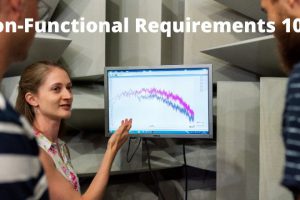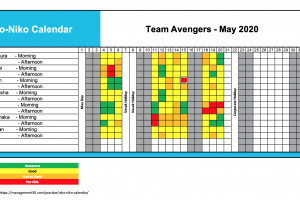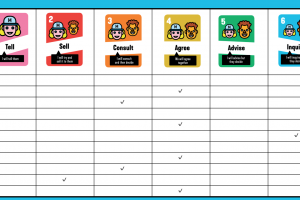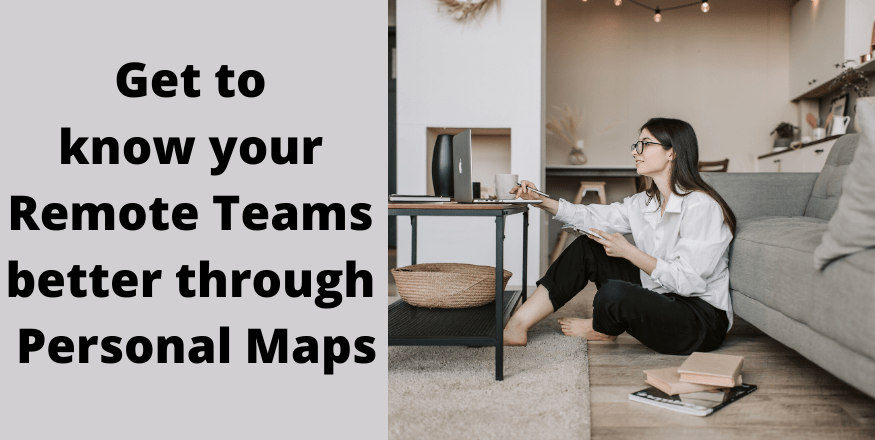
Get to know your Remote Teams better through Personal Maps
Getting to know someone is tough even when you get to meet that individual in-person. One needs to spend a considerable amount of time understanding individuals. Spend time with them, understand their mental states, their behaviors, attitudes and motivators and most importantly empathize with them by giving them their own space. This obviously will thus be an ongoing activity especially when it comes to getting to know team members of software development teams.
Imagine having to do this completely remotely? That’s exactly what happened to me when I began work as the Enterprise Agile Coach of a company just over a month ago. Yes, I started new employment in a role that depends primarily on interaction and collaboration during the height of the Coronavirus pandemic. I faced the challenge of having to get to know over 200 employees in the local office belonging to multiple Agile teams.
How do I get to know them in a subtle manner without them noticing that I am making an effort to understand some finer details about them? How do I not impede into their private space? How do I leverage their daily and iteration wise routines to get to know them better? How do I make sure that my objective of getting to know individuals as the Agile coach gets fulfilled while engaging with the team members? This was the dilemma that I faced.
I decided that getting team members to draw Personal Maps describing them was the way to go about this. The objective is to get to know characteristics, attitudes, behaviours and other interesting facts about their lives. I may not be able to remember their faces individually, but surely a diagram would help me in the long run, even after getting back to work after the Coronavirus situation. The personal map is also a great way for the team to get to know their teammates better. There may be some hidden talents or commonalities among team members which I wanted to draw out through this exercise. This article describes how I facilitated this activity and what I learnt out of the same.
What are Personal Maps?
It is very important to create effective working agreements with team members when working in knowledge-intensive environments. After all, we are a group of human beings, with a set of skills and talents, and own set of egos that are working with machines to deliver some form of valuable solutions.
The optimal way to do this is by getting to know each other better and by understanding their behaviors, characteristics, attitudes, motivators, and even a bit about their personal lives. This will allow individuals to care for each other, act with empathy, and be more accommodative. Personal Maps which is a branch off of Mind Maps is a great way of visualizing a story about individuals.
Elements of Personal Maps are very simple.
- The Main Topic or in this case the name and/or a profile picture of the individual is put in the middle of the page. Make it visible and clear for everyone to see.
- A few Topics such as a few demographic factors, home or family details, Education, Hobbies and Interests, Values and Goals in life are then added and linked to the main topic
- Sub-topics or details under each topic can now be added by each individual to explain themselves. The individuals have the freedom of exploring the map in any way they like. For example, they can add details about their favorite outdoor sport, travel destinations, and what drives them in life such as family, honesty, integrity, etc.
- Draw connected lines or associations from the Main topic to topics, and finally sub-topics to show a logical flow between characteristics.
- Use images, and colors as appropriate to better describe the individual. Vibrant colors may indicate certain characteristics about the person so please do encourage the participants to express themselves.
- Add descriptions for each association to explain the relationships further.
The personal map is like the blueprint of someone’s life. So get the participants to express themselves. Give them the freedom to be colourful, expressive and vibrant (if they are extroverts) or even dull and boring (if they are introverts or simply because they are lazy). An expressive personal map will be provide wealth of information for coaches, leaders such as scrum masters, and managers to make decisions on interacting with their colleagues.
How did we create Personal Maps?
Now, I will explain how I did this exercise using Remote Collaboration Tools. The exercise was initially tried with an Agile team of 8 team members working remotely from home. Microsoft Teams which is the internal communication and collaboration tool was used as the medium for communication while the team members were asked to draw the personal map on a piece of paper and upload it to a Google Jam Board. Individuals were given the freedom to even use a free online mind mapping tool to draw the map.
Below are the steps followed when carrying out the activity.
- I introduced Personal Maps to the team members along with topics about them that I wanted to focus on. For this activity, I asked them to focus on family, values, interests, hobbies, life goals, and education.
- Then I gave them five minutes’ time to create their own personal maps individually. Participants actively engaged using mind mapping tools or simple pen and paper to draw the diagrams.
- I then created four breakout rooms on Microsoft Teams. I paired up the team members creating 4 couples and pushed them into the rooms.
- I asked each member to look at the Personal Map created by the partner and requested them to try and understand a bit about them. I allowed for clarifications if need be to be asked. I wanted them to identify 3 new things about their colleague that they didn’t know about in the past and to note them down during the breakout session which ran for 5 minutes.
- I as the Agile Coach moved from room to room to listen to discussions.
- Finally, I brought the participants back to the main room and asked each member to disclose three new and interesting things that they learnt about their partner.
- The participants had a laugh about certain new things they got to learn about their colleagues.
Below is the Personal Map created by one of the participants.
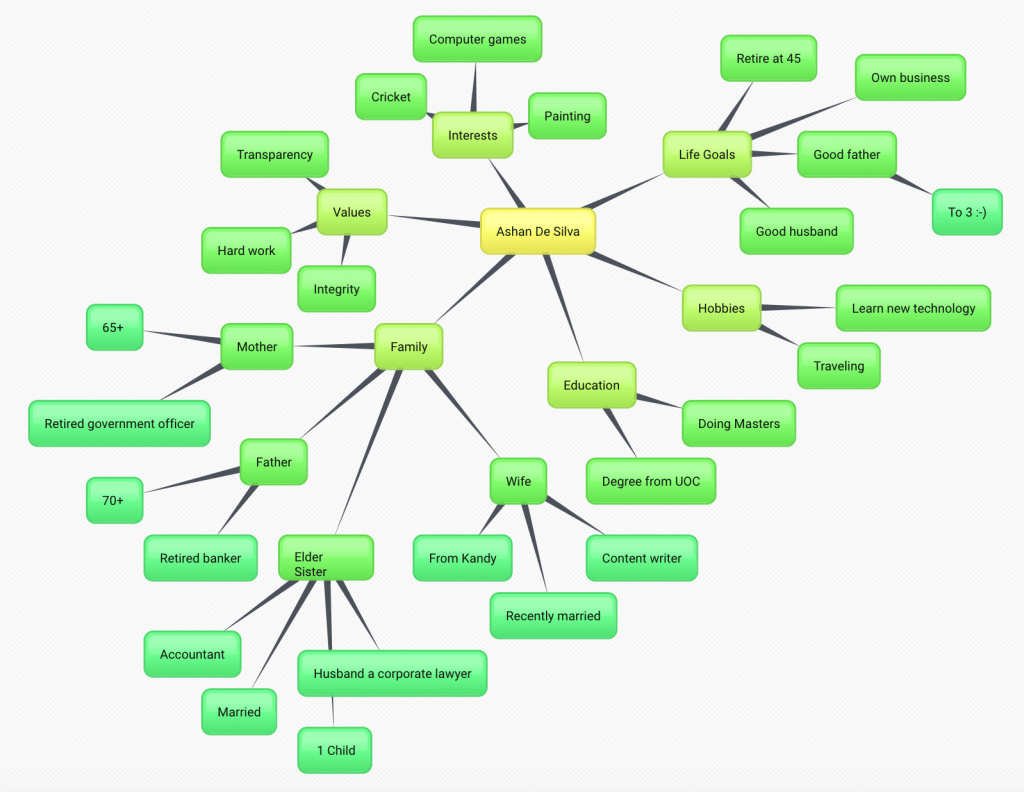
Learning and Actions
The key learnings from the session and action items taken are as listed below. Learnings and action items listed below include learnings and action items for the team and for me as the Agile Coach.
- It is a clear opportunity to learn more about others.
- It is a great opportunity to learn some intrinsic and hidden facts about team members.
- The personal maps activity provided an opportunity for the participants to be open.
- It helped in building trust and team bonding.
- It provided greater insights on unknown strengths, behaviours, thinking patterns, and talents of individuals which could become useful for others and the team in the future.
- It was an opportunity to be transparent and vulnerable.
- It was a great opportunity for the Agile coach to learn about each team member’s job role, personality and other characteristics.
- It provided a good opportunity for the Agile coach to get a better understanding of learning patterns, training and coaching needs of individuals.
- In terms of next actions,
- The team decided to continue applying the technique once in two months and look to explore other aspects about team members
- Scrum Master wanted a one-on-one coaching session to see how he could better tap into intrinsic characteristics of team members
- The agile coach needs to do this activity with other teams and get more individuals to draw the Personal Map
- Look at other online collaboration tools (such as Mural, lino) that can provide better options for collaboration
- The team members decided to do an online sing-along session as they identified 3 musicians from within their group
In conclusion, the personal map is a great way to visualize a lot of interesting facts about individuals in a really short period of time. It encourages vulnerability, openness, transparency, and a bit of humor. Have you seen or used a Personal Map for your project teams? What did you learn about your team members? Share your experiences in the comments below. I would really love to hear from you!

